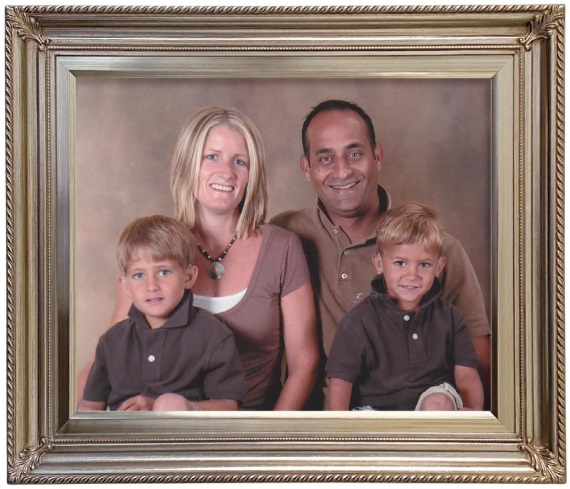When we receive a diagnosis that our child is not the healthy baby we were expecting, the future can look bleak and the unknown can feel scary. Of course, we need to grieve for the future we had envisioned for our child, but once acceptance settles in, it is time to make a new plan and put the pieces in place, to give our children the tools to be successful.
FINDING THE PIECES
Regardless of the diagnosis, we seek out the therapies and strategies that are going to help our children, so that we can start putting the pieces together to find what makes sense for their individual needs and interests. Everyone has their own puzzle, and the pieces and sizes are different. For my sons, Ethan (21) and Gavin (18), who have Usher syndrome type 1b, there were times we had to work on finding the bigger pieces so eventually we could move on to the smaller pieces, and then put it all together. They were born with profound sensorineural hearing loss with no residual hearing, and have retinitis pigmentosa (causing tunnel vision and eventual blindness), as well as vestibular dysfunction. None of this was familiar to my husband and me, and in the early days, it seemed that understanding how to put this puzzle together was impossible. We had to look at it in parts so it was manageable, and not overwhelming.
THE PATH TO LISTENING AND SPOKEN LANGUAGE
Ethan was diagnosed with a profound sensorineural hearing loss at ten months old. We were presented with communication options, and after thoroughly researching those choices, we decided on cochlear implants to give him the opportunity to be a part of the hearing world. This decision was not made lightly, as we had never heard of cochlear implants 20 years ago and it required surgery. Since the technology would give him access to listening and spoken language, and success was related to the age of implantation, we felt we needed to make that decision for him because he was too young to do it himself. When Gavin was identified during the newborn hearing screening and diagnosed soon after, our decision was the same for him. Making the decision was just the beginning of this journey. There was still a lot of work to be done to ensure that both of our children were successful cochlear implant users.
After Ethan and Gavin's cochlear implants were turned on, attending Auditory Verbal Therapy appointments was crucial to helping them make sense out of what they were hearing. Having the implant did not mean that they were automatically going to be able to 'hear' and understand. They had to work to build new path

COVERING GROUND: (Above) The Aasen Family in 2006, (left to right) Ethan, Pam, Carlito, and Gavin; (Opposite page) the family in 2023 (left to right) Ethan, Pam, Carlito, and Gavin.
ways in their brains that would help them understand these sounds. The boys' speech language therapist, Karen MacIver-Lux in Toronto, made it clear that it was our efforts, both during therapy and afterward, that would determine how well Ethan and Gavin would communicate using listening and spoken language. She gave us the tools, in a play-based setting, to support our children. She coached us on how to make everyday activities into learning opportunities for language. Once Auditory Verbal Therapy stopped, they had Teachers of the Deaf and Individual Education Plans (IEP's) until they graduated from high school, to continue to provide the support that was crucial to their success as their needs changed.
I first had to support the learning of different sounds, however, once they started to develop language, I began with language experience stories about every activity and event. Digital cameras were just coming out, so I made stories with the pictures allowing us to talk about what we did. We read a lot of books, and my husband took on the bedtime story each night. Every toy we bought had a purpose. We chose toys that would elicit language, like the Little People Neighborhood sets. I think I played more with toys during that time than I did when I was a child. As they got older, in elementary school, their Teacher of the Deaf (TOD) would talk to them about current events, if she had time left after reviewing the lessons of the day. They really enjoyed this, so I put up a map and we talked about what was going on in the world and where the countries were located. They loved airplanes, space, and rockets, so I found models of the planets and bought toy airplanes and spaceships; all regular toys, but for us they had a purpose in helping increase their vocabulary through our discussions. Their grandparents, Aunts, and Uncles also participated in the efforts to build their language skills.
I didn't need to buy specific therapy toys or games, they had the same toys as their friends. It was the need for increased interaction with a focus on language development that made it different. Ethan and Gavin just needed a little more emphasis to help them with listening and spoken language. Vocabulary and colloquial expressions needed to be taught because they did not naturally absorb that information the way hearing children do. With this in mind, we started dinner conversations when they were in kindergarten, using prompts from the Scholastic Family Dinner Box of Questions. Once we exhausted those questions, we moved to brain teasers, banana